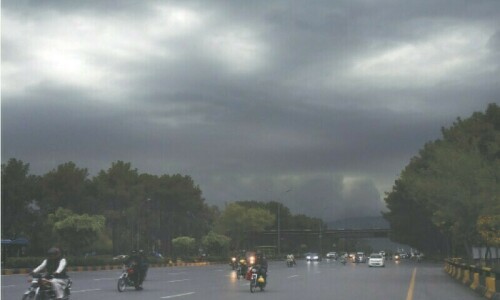THE second consecutive rate cut by the SBP underscores the fact that the central bank is relatively bullish on a slower but stable recovery, expecting the economy to build upon the gains of last year’s stabilisation policies. Its decision to cut its policy rate by 100bpc, on top of an earlier reduction of 150bpc in June, to 19.5pc seems to have been driven by declining inflation, a narrowing current account deficit, the build-up of reserves despite substantial debt and other repayments, and the conclusion of a preliminary agreement with the IMF for a $7bn loan. The SBP is hopeful that its reserves will grow from above $9bn to $13bn by the end of this financial year on the back of a manageable current account and anticipated foreign official and private flows. Monetary authorities also feel that the accumulation of reserves has created space for further rate reductions to support growth while keeping inflation in check as “the monetary policy stance still remains sufficiently stringent to steer inflation towards the medium-term target of 5pc-7pc”. However, as also cautioned by the bank in the policy statement, the continuation of monetary easing is contingent on fiscal consolidation, realisation of planned external flows and structural reforms addressing the economy’s underlying weaknesses.
Hours before the policy announcement, Fitch upgraded Pakistan’s sovereign credit rating by a notch from ‘CCC’ to ‘CCC+’, citing easing external funding risks, improvements in the current account, etc. The new Fitch rating means that the danger of Pakistan defaulting is over for now but significant risks remain. Yet the improved credit rating can help Pakistan raise international debt to shore up its reserves and support further reduction in borrowing costs through Eurobonds and Panda bonds, though investors might demand higher returns. The two developments are seen as positive signs of economic stabilisation. Nonetheless, we have a long way to go before the economy is back on a faster growth trajectory. With the economy billed to remain fragile and in low growth mode due to the implementation of the stabilisation policy, the next three years will not be easy for the people. Our policymakers may rejoice over the IMF loan and a better credit rating. But they must understand that there is no more room left for them to backtrack on their pledge to reform.
Published in Dawn, July 31st, 2024











































Dear visitor, the comments section is undergoing an overhaul and will return soon.